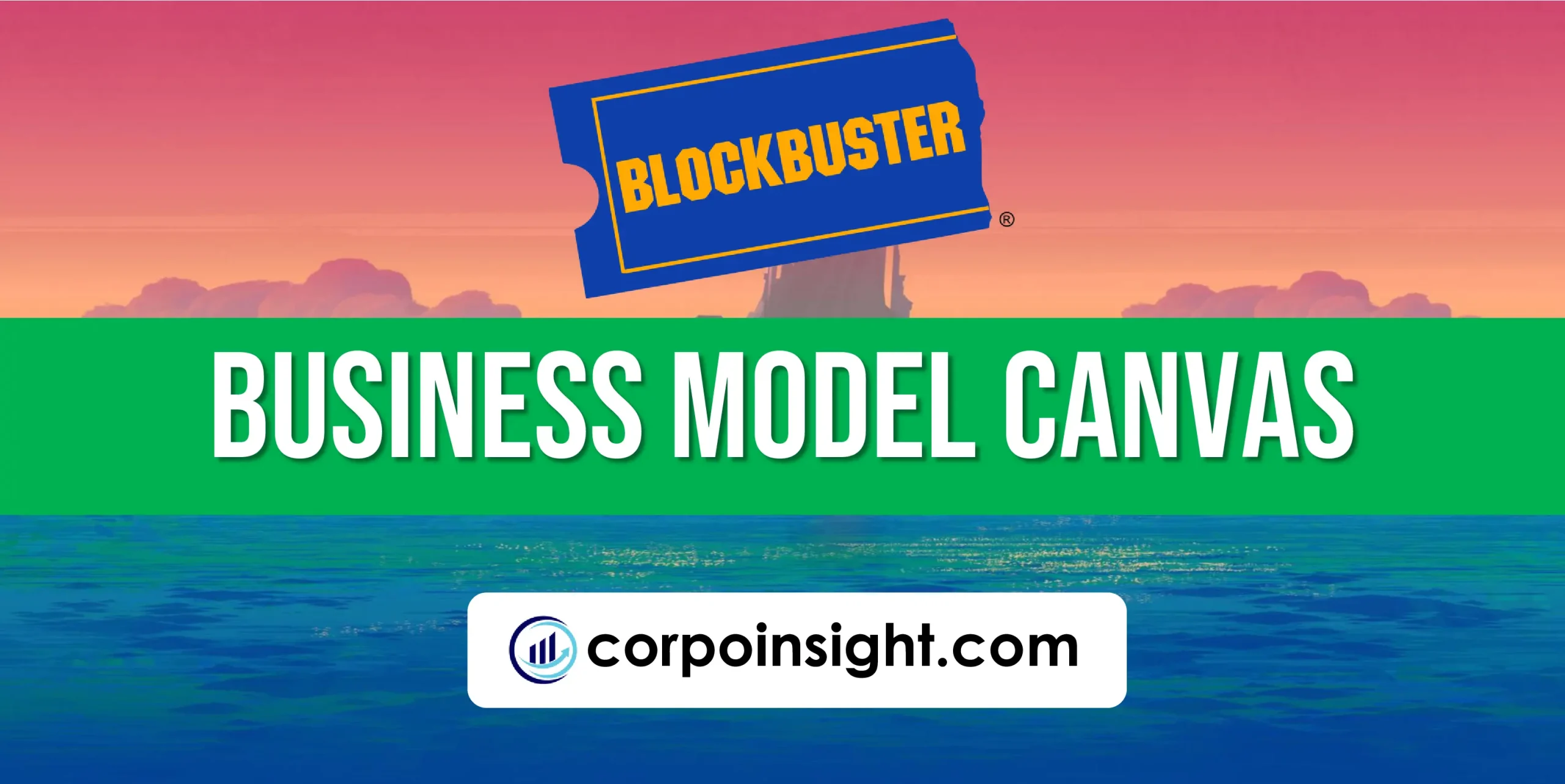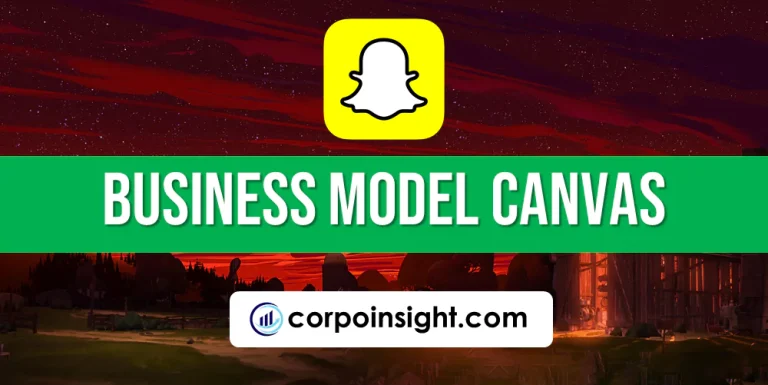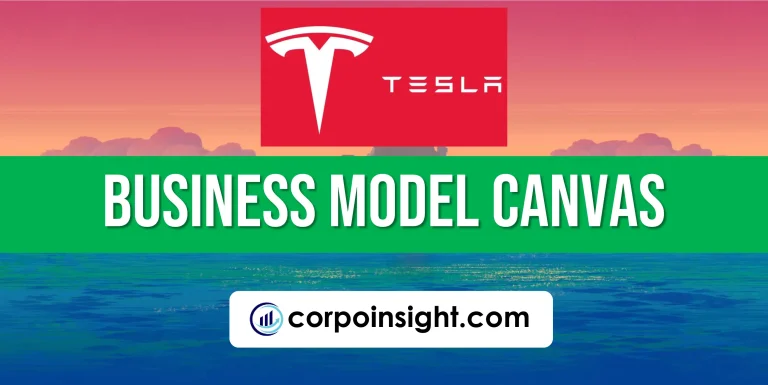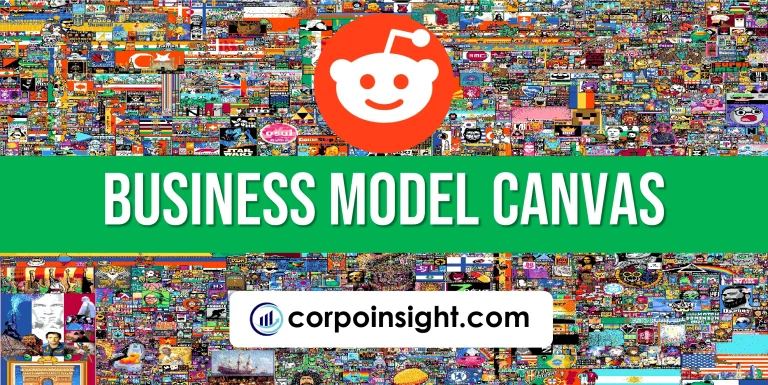Blockbuster Business Model Canvas 2024
Once the leading movie and game rental chain with over 9,000 stores at its peak in the 1990s, the downfall of Blockbuster serves as a cautionary tale of how even the most dominant companies can fail when faced with digital disruption and new technologies that render their business models obsolete. Here, in this Blockbuster business model canvas, we will learn Blockbuster’s customer segments, value proposition, revenue streams, channels, customer relationships, key activities, key resources, key partners, and cost structure.
Interesting fact!
At one point, 10% of Blockbuster’s revenue came just from late fees from customers returning videos late.
Blockbuster Competitors
Netflix | Redbox | Hollywood Video | Movie Gallery | Hastings Entertainment | Family Video | MovieBeam | CinemaNow | Amazon Video
Customer Segments – Blockbuster Business Model Canvas
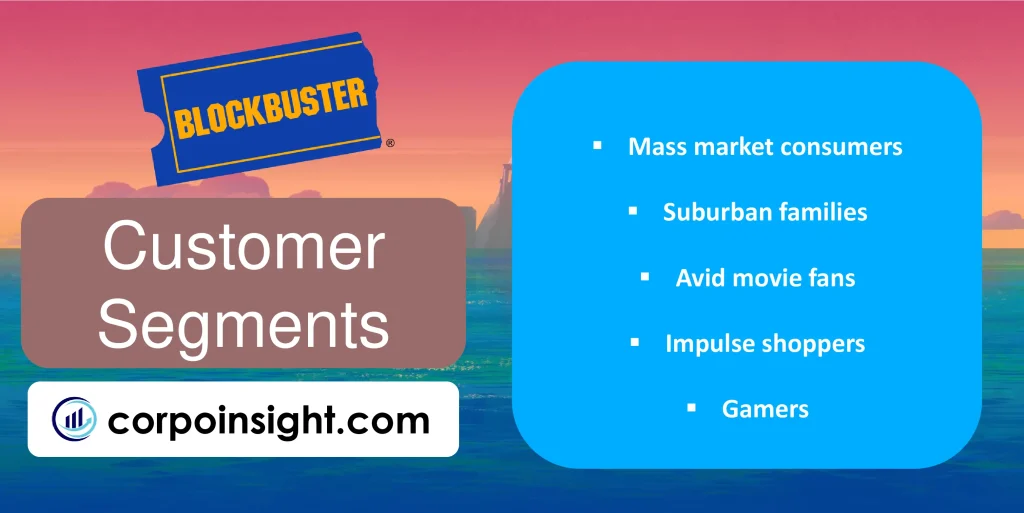
Mass market consumers: At its peak, Blockbuster served a huge mass market of consumers who wanted the convenience of quickly renting popular new-release movies and games from physical neighborhood stores. Blockbuster’s 9,000+ stores allowed it to reach many typical American households.
Suburban families: Blockbuster stores were strategically located in suburban areas near residential neighborhoods, aiming to provide entertainment options for families through its mix of new releases and catalog movie/game titles. Stores were designed to feel family-friendly.
Avid movie fans: For avid movie watchers, Blockbuster offered the benefit of convenient access to new releases before they were available for purchase. Some customers visit Blockbuster often to keep up with the latest entertainment.
Impulse shoppers: Blockbuster took advantage of impulse shoppers by placing stores in high-traffic areas and promoting new releases in-store. Bright, eye-catching displays attracted shoppers making unplanned visits.
Gamers: Blockbuster served the gaming segment through rentals of console, handheld, and PC games. Its stores provided browseable game libraries versus individual title mail orders.
Value Proposition – Blockbuster Business Model Canvas
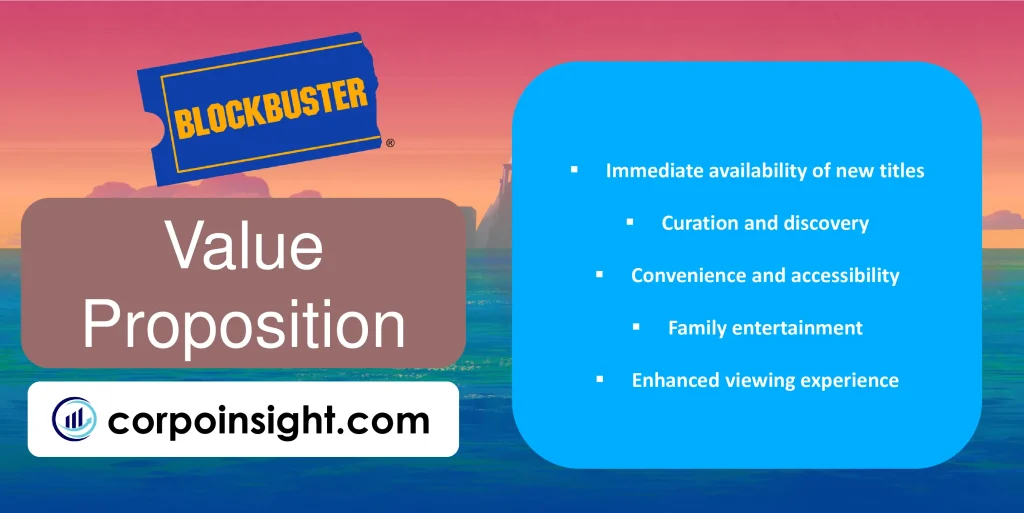
Immediate availability of new titles: Blockbuster stores enabled customers to immediately rent new releases and popular movies/games on impulse without waiting or planning ahead. This was valued, especially by avid fans.
Curation and discovery: Blockbuster’s large title libraries and prominent promotions of new releases helped less knowledgeable customers discover and choose rental options through curation rather than searching aimlessly. Stores offered a browsable, tangible experience.
Convenience and accessibility: With over 9,000 neighborhood stores, Blockbuster offered unparalleled geographic convenience and accessibility for most customers before the rise of instantly available streaming. Stores were open for long hours.
Family entertainment: Blockbuster aimed to be a family entertainment destination, with options for parents and kids of all ages. Stores had a family-friendly feel, and staff were trained to make recommendations for families.
Enhanced viewing experience: Along with movie/game rentals, Blockbuster also sold accompanying candy, snacks, and drinks to enhance the at-home viewing experience. This provided customers with an easy one-stop option.
Revenue Streams – Blockbuster Business Model Canvas
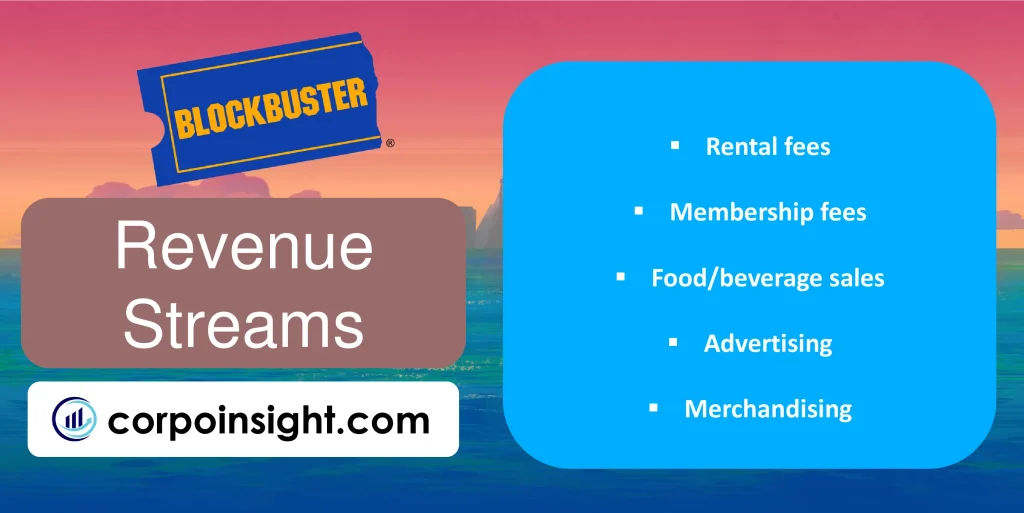
Rental fees: Blockbuster’s core revenue stream was fees collected from customers renting movies, games, and equipment for set periods of time, typically 1-5 days. Late fees for overdue items also contributed significantly.
Membership fees: At one point, Blockbuster also generated revenues from annual membership fees that provided benefits like no late fees and free rentals. However, this model was discontinued later on.
Food/beverage sales: Blockbuster stores sold soda, candy, popcorn, and other food items to complement in-home movie/game experiences and capitalize on impulse purchases around entertainment.
Advertising: Blockbuster earned revenues by selling in-store advertisements and promotional placements to studios and other businesses targeting its large entertainment customer base.
Merchandising: Blockbuster profited from preferred merchandising agreements with movie studios and game publishers who paid for prime product placement and promotion across stores.
Channels – Blockbuster Business Model Canvas

Physical retail stores: At its peak, Blockbuster operated over 9,000 brick-and-mortar stores nationwide that allowed for convenient browsing of titles, impulse rentals, and face-to-face customer service interactions.
Mail-order service: In 2004, Blockbuster launched an online DVD-by-mail rental service to compete with Netflix, leveraging its brand name and customer base. However, it failed to gain significant traction.
On-demand streaming: Very late in its lifespan, Blockbuster attempted to break into digital on-demand movie rentals via set-top boxes, its website, and mobile apps, but those channels were already dominated by competitors.
Partnerships: Blockbuster formed partnerships with movie studios, game publishers, and snack/drink brands in order to promote and sell entertainment products and enhance in-store offerings for customers.
Advertising: Blockbuster relied heavily on TV, radio, print, and in-theater advertising to promote new releases, membership programs, and store openings/events in order to attract customers.
Customer Relationships – Blockbuster Business Model Canvas
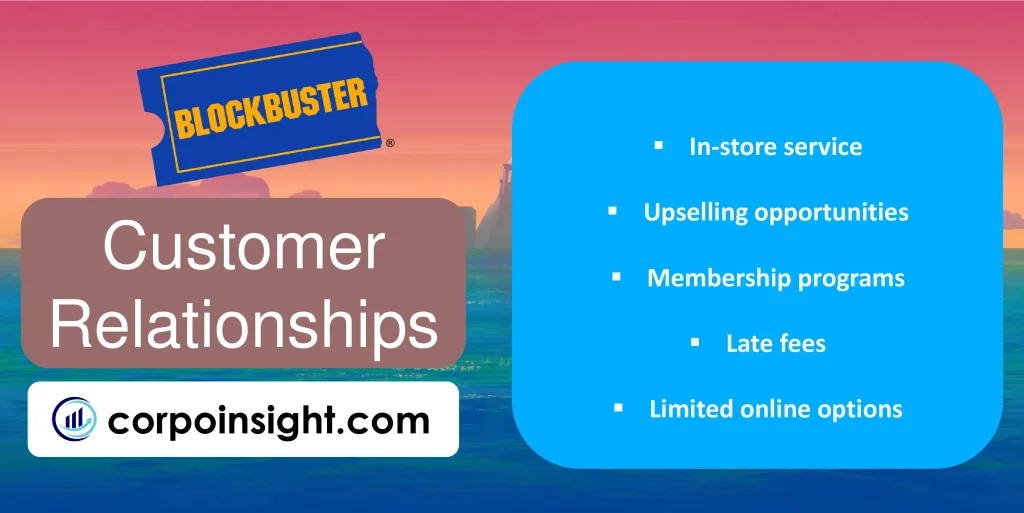
In-store service: Blockbuster store staff provided face-to-face advice and recommendations to customers browsing for movie and game rentals. This created some familiarity and loyalty at a local level.
Upselling opportunities: Counter interactions at checkout allowed staff to upsell accompanying items like snacks or additional titles based on the customer’s selections and renting history.
Membership programs: Blockbuster’s subscription tiers created ongoing relationships with customers and provided perks like free rentals that incentivized loyalty until they were eventually phased out.
Late fees: The dreaded late return fees actually drove recurring interactions and served as touchpoints between Blockbuster and its more unreliable customers. The fees added friction though.
Limited online options: Blockbuster did little to foster direct digital relationships with customers compared to competitors. Its online rental and streaming came too late.
Key Activities – Blockbuster Business Model Canvas
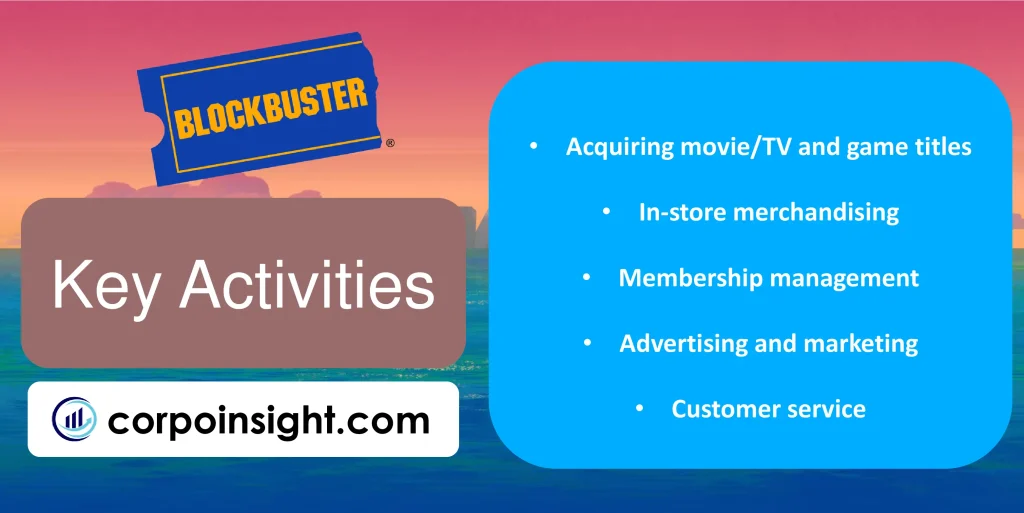
Acquiring movie/TV and game titles: Blockbuster’s procurement teams negotiated agreements with top studios, networks, and publishers to acquire distribution rights for new releases, as well as build a large catalog of backlist titles.
In-store merchandising: Each location required staff to merchandise and display titles carefully to promote key new releases and back-catalog movies based on customer preferences. Displays changed weekly.
Membership management: At its peak, administrating Blockbuster’s membership programs, including tracking subscriptions, promotions, credits, and fees, was a major operation requiring sophisticated IT infrastructure.
Advertising and marketing: Blockbuster relied heavily on advertising via TV, radio, print, and in-theater, as well as large in-store promotional displays and local events to drive customer acquisition and rentals.
Customer service: Blockbuster store staff were trained to provide recommendations for customers, handle all rental transactions, upsell additional items, and manage membership details, accounts, and late fees.
Key Resources – Blockbuster Business Model Canvas
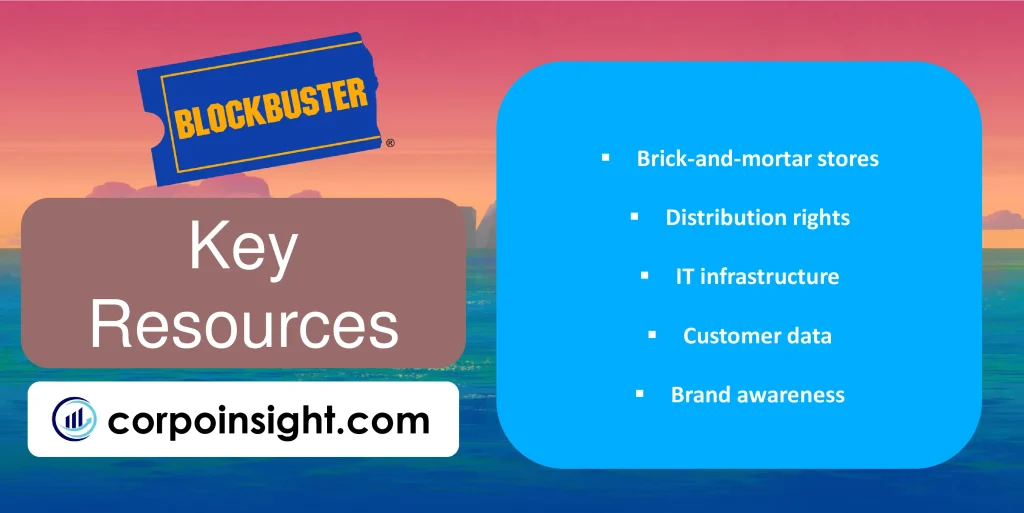
Brick-and-mortar stores: Blockbuster’s most valuable assets were its thousands of retail store locations nationwide, which allowed it to distribute and market entertainment rentals locally via a recognizable brand.
Distribution rights: Key entertainment industry partnerships provided Blockbuster access to new releases and catalog movie and game titles for rental and resale shortly after theatrical or commercial release.
IT infrastructure: Blockbuster relied on proprietary information systems to manage its complex operation, including membership/subscription tracking, inventory management, and point-of-sale systems.
Customer data: Over time, Blockbuster amassed extensive customer rental data and insights that informed merchandising decisions in-store to optimize inventory for local preferences.
Brand awareness: Widespread national brand/logo recognition and customer familiarity with the Blockbuster name and store experience were incredibly valuable company resources.
Key Partners – Blockbuster Business Model Canvas
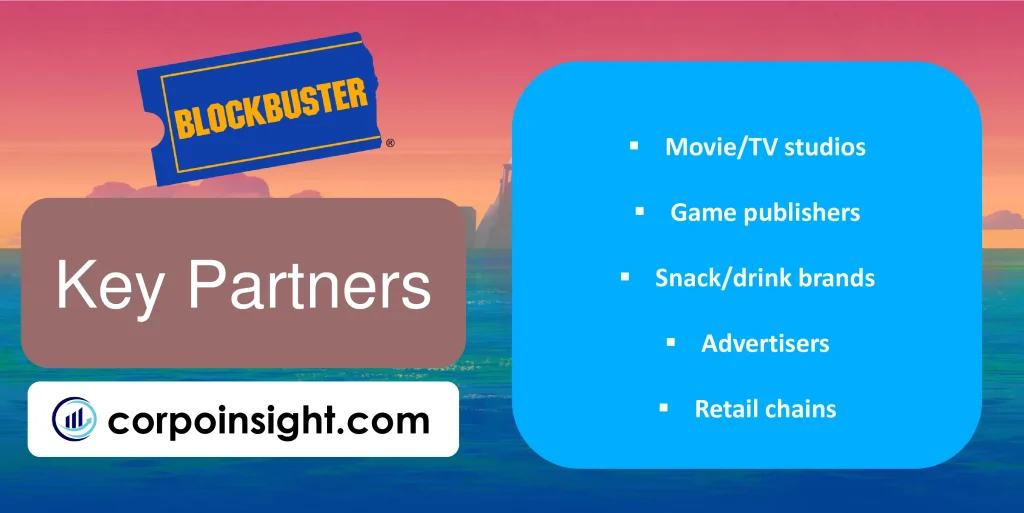
Movie/TV studios: Distribution partnerships with major Hollywood studios like Paramount and Fox gave Blockbuster access to new release titles in return for rental revenue sharing.
Game publishers: Likewise, relationships with top video game companies provided Blockbuster with copies of new game releases to rent and resell through its stores.
Snack/drink brands: Partnerships with snack vendors gave Blockbuster a cut of in-store sales of complementary items like soda, candy, and popcorn to customers.
Advertisers: Blockbuster relied extensively on advertising partners and media companies to promote its brand, store locations, membership deals, and new releases via television, print, and in-theater ads.
Retail chains: Blockbuster partnered with larger retailers on store-within-a-store concepts that created “shops” inside outlets like RadioShack and Kroger.
Cost Structure – Blockbuster Business Model Canvas
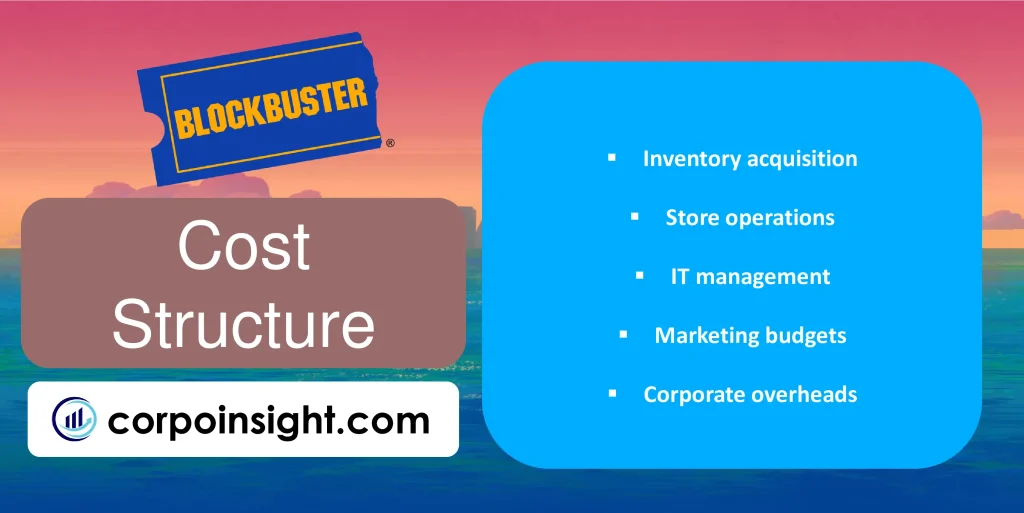
Inventory acquisition: Media distribution rights and wholesale acquisition of DVD/Blu-ray discs and games accounted for Blockbuster’s largest cost. Revenue sharing limited profit on rentals.
Store operations: The overhead involved in operating thousands of retail stores nationally – staff, rent, maintenance – was incredibly expensive for Blockbuster to maintain.
IT management: Managing proprietary IT systems for inventory, membership management, and corporate operations required large investments in software, infrastructure, and IT staff.
Marketing budgets: Blockbuster spent aggressively on advertising and marketing via television, print, and promotional merchandising in stores to drive customer acquisition and retention.
Corporate overheads: Blockbuster’s large corporate staff and facilities were ultimately an oversized cost structure it struggled to support as revenues declined, hastening its demise.
Summary of Blockbuster Business Model Canvas
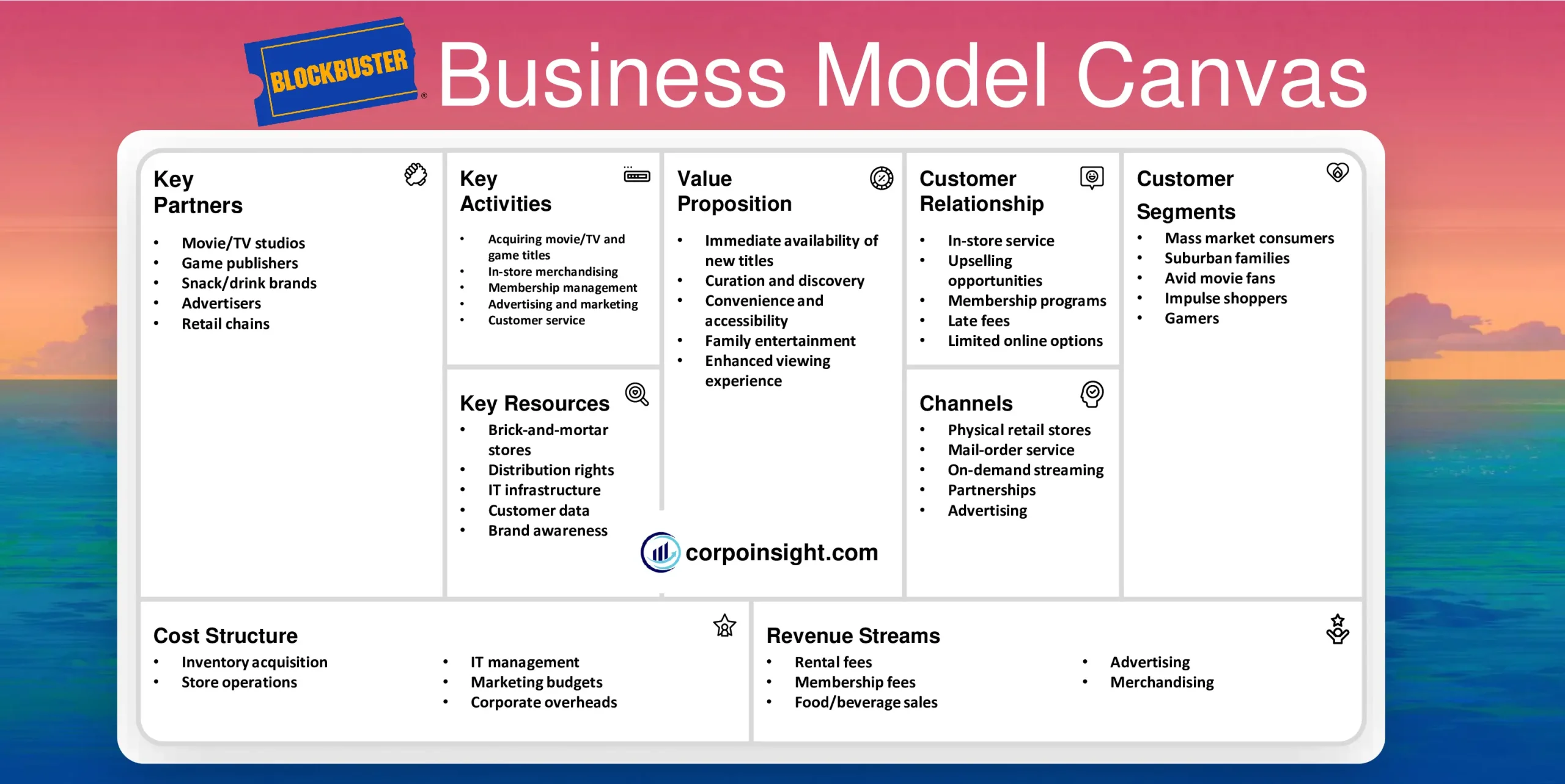
Conclusion on Blockbuster Business Model Canvas
Blockbuster’s business model relied heavily on brick-and-mortar stores, distribution deals, and advertising to drive in-person rentals of physical media. But as consumers shifted to more convenient digital platforms, Blockbuster did not adapt quickly enough. With expensive overhead and real estate, the outdated value proposition of immediate disc rentals could not sustain growth. Blockbuster serves as a classic case of disrupted distribution in the digital age.

Hi! I am Mohammad Safayet Hossain, pursuing my BBA in Marketing at the Bangladesh University of Professionals. As a business student, I am passionate about learning about various companies and industries and am here to share them with you.

